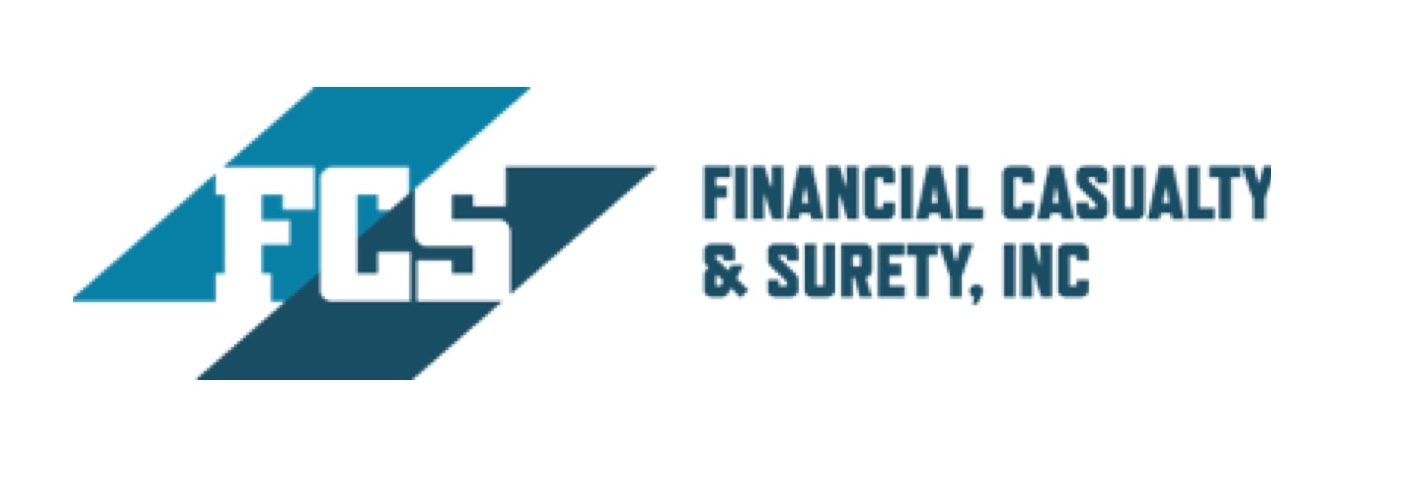
I. Introduction
This is the fourth in our four part a series regarding whether any county in Texas should adopt the Harris County model for bail reform. This article addresses what successful bail reform looks like.
The private surety bail system has been in place for over 200 years. The purpose of bail is to allow someone accused of a crime to get out of jail while their case is pending. In exchange for freedom, the accused promises to appear in court any time it demands his appearance. If a defendant fails to appear, his or her bond is forfeited and a warrant is issued for their arrest. The criminal case is then placed on hold until the accused reappears. This could be for hours, days, weeks or even years -- and occasionally never. As we look to improve the bail system in Texas, we must first begin with the proposition that says “we should do no harm.” We should not initiate changes which will make the system worse by creating unintended consequences that slow down the system or makes it unworkable in other areas.
II. Goals of Reform
To reform the bail system, we have to determine what are the goals of reform. There are a lot of social ills in the world: drug use, failing schools, disintegrating families, mental illness and lost economic opportunity. But is bail reform the place to address these social issues? The Vera Institute recently acknowledged that the reforms that it was pushing in New York would increase failures to appear by 40%, but defended this result as acceptable to create a more "fair" system.
Chief Justice Hecht of the Supreme Court of Texas argues that jail overcrowding is the reason for bail reform. However, some in law enforcement maintain that the criminal justice system should be detaining more individuals before trial to ensure public safety. Meanwhile, Governor Greg Abbott recently tweeted that anyone accused of killing a cop should not be eligible for bail and should be held. In the last legislative session the Governor pushed a bill that would have required a review of a person's criminal history before setting bail. But it did not pass.
At the same time, the federal courts have identified issues when a county uses a bail schedule, but does not allow an accused to ask for a deviation from the scheduled amount. These courts have mandated that defendants must be given such an opportunity within 48 hours of arrest. Common sense would seem to suggest that any changes should codify these constitutional requirements set out by the courts.
Still others propose replacing one automated release method (a bail schedule) with another (risk assessments), even though numerous groups, including scholarly research has come to the conclusion that risk assessments should not be used as a part of Criminal justice Reform. Since we released the second part of our 4 part series, the Pretrial Justice Institute has issued a statement on the use of risk assessment tools. The statement says that risk assessment tools should no longer be a part of any solution for criminal justice reform. They admit that they were wrong for being a major supporter of the of risk assessment tools.
So, just what should be the goals of reforming the current system? We believe that the goal of any change should be to make the system work better. Therefore, any changes should be flexible enough to address the needs of your county to allow judges to use the tools that have shown to work..
III. Proposal for Bail Reform
You may already be down the road to improving your criminal justice system. If you are congratulations!
A. Flexibility to Select the Method of Bail to be Used
1. Assessing People as they are Arrested
One of the things that would improve any pretrial program would include a system of assessing people after they enter jail. This would enable the criminal justice system to better determine whether the defendant has a true criminal justice issue or has a mental health issue instead. If the latter, this individual would be better handled by the mental health system. Or if they are dealing with drug abuse, it might be better if this were addressed by a drug court. Assessing individuals as they enter the jail would allow individuals to be directed away from the criminal justice system in appropriate situations which would then allow the courts to focus on this smaller group of individuals.
2. Allow for the Use of Individual Magistration and the Use of Bail Schedules To Allow Defendants to Post Any Type of Bond They Prefer
The problem in our largest counties is how do you process large numbers of people, efficiently through the county jail. Therefore, reforms should allow for the quickest release possible of as many individuals as possible from the county jail so that the magistrates may focus their limited time and resources on whoever is left to get them processed through the jail as quickly as possible. Historically, the types of release which have been used are: individual magistration, the use of bail schedules, the use of risk assessments; and more recently the whole sale release of individuals without magistration (Harris County Model and New York Model).
The fact that so many groups and scientists are rejecting the use of risk assessments is important to any discussion regarding what is successful bail reform. The reason for this is what are the available types of release that have been used historically?
Historically, large groups of the population have been processed through the jail with the use of bail schedule. The federal courts have acknowledged that they do just that, but the constitution requires that arrestees claiming poverty must have an opportunity within 48 hours of arrest to seek a deviation for the scheduled amount. Advocates for change initially advocated that instead of using a bail schedule, counties should use a risk assessment tool. These people were essentially arguing the replacement of one automated tool with another somewhat automated tool. But overtime, the advocates for change have reassessed their view of the risk assessment tool. It appears that all of the groups that first supported the use of risk assessment tools now oppose their use.
Now that these groups no longer support the use of a risk assessment tool, what release mechanism are they advocating should be used? The Harris County Model and the New York Model would exemplify a system where the arrestee is simply released. In Harris County they never see a magistrate for certain crimes and they are released on an arbitrary $100.00 PR bond. In New York, the trial court judge is required to release the defendant without any bond.
The models that just simply release people have been an utter failure. The Vera Institute has admitted in the last week that the use of this system will increase failures to appear by 40%, but they think that is acceptable to create a new more fair system. This argument fails to recognize the damage done to the system anytime there is a failure to appear. When the defendant fails to appear, the case is put on hold and must await the return of the defedant to get back on track.
So what are the tried and tested methods of release that can be used by the magistrates to determine the issue of release: individual magistration. It would also be appropriate to use a bail schedule coupled with individual magistration within 48 hours of arrest for those still in the jail.
There have been some critics who have said that this system is not fair to the poor, but the 11th Circuit addressed this argument directly and held that while a poor person claiming poverty may see this as not being as fair initially, at the individual hearing this individual's status is then elevated and they have a special status when they come before the court for review.
Both individual magistration and the use of bail schedules utilizing private sureties should be considered in order to allow each court to determine what is in its best interest.
The Harris County Model is based upon a settlement of a federal case and not based upon state law. Harris County entered into a settlement in a federal lawsuit wherein they agreed to grant PR bonds to over 85 percent of all misdemeanor arrestees. As we pointed out in our first email in this four part series, the Texas Office of Court Administration has already taken a position that OCA opposes the Harris County model from being applied anywhere else in Texas. This process allows for the quick release of defendants, but they never see a magistrate. The judges have essentially no discretion and nearly all misdemeanor arrestees are automatically given a $100 PR bond without seeing a magistrate. This has led to crazy results in which defendants are receiving as many as six, seven or eight PR bonds…and sometimes even more because of increases in failures to appear.
Additionally, a side effect of this process is a substantial increase in the number of pending cases and warrants in the county. Harris County has seen an increase of incidents at traffic stops in which motorists are checked and found to have a pending warrant. Those individuals who have multiple failures to appear or who know that a warrant is pending have to make a choice in a fraction of a second of whether to turn themselves in -- or fight and run. The upsurge in warrants logically increases the likelihood of these occurrences, along with the number of times that a person will make a poor snap decision, often with devastating consequences.
3. Develop systems and/or standing orders to monitor who is in jail preconviction and order remagistration if they are still in jail after 72 hours after bail has been set.
Any reform of the system should include the development of a system and/or standing order to monitor who is in jail preconviction. There have been several situations where defendants have been arrested and failed to post bond, and in which it appeared that no one was tracking how long they had been in jail.
Janice Dotson-Stephens was arrested in Bexar County on July 17 on a charge of trespassing on private property. Her bail was set at $300 and it was likely that she could have been released with a mere $30 payment. However, she suffered from mental illness and refused to be interviewed. Approximately six months later Dotson-Stephens died in the jail infirmary. This was a clear failure of the system because under current law, for misdemeanor offenses such as hers, release is required after 30 days. Tex. Code of Crim. Pro. art. 17.151 (2).
Setting up a system of tracking of who is in jail preconviction and how long they have been held would enable the criminal justice system to know when the accused must be released under existing law. It would also enable other checks to be put into place, such as a requirement that would apply to certain defendants who are still in jail after a set time, e.g. 72 hours. Such individuals could be brought back before the trial court to determine why they are still being held.
4. Take politics out of the Criminal Justice System by saying that anyone on a PR bond who fails to appear or is accused of a new crime is not eligible for a new PR bond .
Any bail reform effort should remove politics from the process of releasing individuals from jail. These reforms should also recognize that if defendants do not appear for court then victims of crime can never receive justice. Accordingly, magistrates and courts should continue to have the discretion to allow the use of PR bonds, but this authority must have limits. If a defendant is out on a PR bond and is accused of a new crime or fails to appear, then they should not eligible for a new PR bond for a certain period of time. Accountability would require that this discretion be limited to prevent the system from being flooded with increasing numbers of backlogged cases and outstanding warrants. Unchecked, the criminal justice system would eventually be forced to shut down or the growing backlog of cases would require the creation of more costly courts to address them.
5. Mental Heath Patients should be directed to mental health facilities and not jails .
In Texas some of the the largest mental health facilities are the county jails. Nationwide Texas ranks 49th in spending for mental health. The failure to address mental health issues has caused a strain on the criminal justice system. In some situations, an accused stops taking their medications because for whatever reason. Their mental health issues increase and cause them to be arrested. The Las Angeles Times recently reported that Mental Illness was much more pervasive in the count’s homeless population that officials had previously reported. Of approximately 4,000 questionnaires taken about 76% were observed to be affected by mental illness, substance abuse, poor health or a physical disability. To see the article CLICK HERE .
Any reform to our bail laws must include mechanisms to address mental health in Texas. Directing these individuals to county jails is not working and is pushing a criminal justice system that is already under stress to the breaking point,
6. Creating additional trial courts .
In counties where there are a large number of person accused of felony charges awaiting trial, any reform should consider the creation of additional district courts to address the backlog of cases. An analysis of these areas would need to take into account whether existing district courts are resolving an average number of cases consistent with the remaining district courts or if they may actually be part of the problem.
7. The Use of Risk Assessments Should Be Discouraged
The use of pretrial risk assessment tool was the darling of criminal justice reform. Now the Texas Office of Court Administration has developed its own risk assessment tool. The problem is that time has not been very good to these cornerstones of bail reform.
The Professional Bondsmen of Texas has released a summary of this information. Since this pamphlet was release the the Pretrial Justice Institute has issued a statement saying that they were wrong to support the use of a pretrial risk assessment tools and the organization admits it was wrong for supporting them and no longer agrees with their use.
IV. Dangers to be Avoided
- Do not change the evidentiary standard to clear and convincing evidence. This is just an attempt to tie the hands of the judges to prevent them from using their discretion to determine what is the best option for each defendant and instead seeks to limit the options available to the judges. A bill seeking to make this change at the Texas Legislature failed last session.
- Watch out for proposals that say that secured bail cannot be required unless the person is individually magistrated, but at the same time says that there will be a bail schedule. First of all, if this is an attempt to set up pretrial release without seeing a magistrate by private surety, there is a contradiction. Second, this would probably be an attempt to set up the Harris County Model by requiring the release of all misdemeanors except certain carve outs on a mandatory PR bond. Texas law only allows a trial court to limit the type of bond posted after a failure to appear and the court in that situation may require a cash bond. Tex. Code Crim. Pro. art. 23.05.
- We have seen several proposed orders in other jurisdictions that appear to say that they are not changing the law in that state. They also say that the full range of options are still available, but then the proposal seeks to make a change that essentially negates these statements. The current law in Texas is the trial court sets the bond amount and conditions and the defendant determines what type of bond to post whether it be private surety, cash or to request a PR bond. Any general order should not turn this process on its head to make it more difficult to use a private surety bond by saying that they can only be used based upon clear and convincing evidence. This is not a question of fairness. This is a question of the survival of the criminal justice system. Courts cannot withstand a 40% increase in failures to appear.
- Additionally, any proposed order should address failures to appear. Orders based upon clear and convincing evidence are intended to make it very difficult to hold the defendant accountable for any failure to appear or for being charged with certain new misdemeanor crimes. The clear and convincing evidence standard is intended to limit a judges ability to hold the defendant accountable. Under the Harris County system, misdemeanor defendants fail to appear 4, 5, 6, 7 and 8 times without consequences. Therefore, any order should specifically address failures to appear or additional charges while on a PR bond. If the accused is not successful on a PR bond they should not be granted another PR bond.
V. Conclusion
What is the purpose of the changes being sought to the Criminal Justice System in your county? The county is already in the middle of making substantial changes which appear to ensure that they comply with the most recent federal cases. Is the proposed order documenting what has already been done or is it seeking to change the path going forward?
Any reform of the criminal justice system must be multi-faceted to be successful and must comply with state law. Further, it must be flexible. It should not tie the hands of the judges to prevent them from using their discretion.
Most important is what we stated at the beginning, that the first rule is “to do no harm.” As much as some may feel that our criminal justice system is in need of an overhaul, we must not be reckless in plunging ahead with changes that have proved to be a catastrophe in other areas. It seems so terrible that we are now in a period of time where we cannot agree what is successful and what is not. Even if there is not agreement on whether Harris County is successful, there should be agreement that not everyone agrees that it is successful. Further, if law enforcement says it is a failure, if the Vera Institute says that such a system will increase FTA's by 40%, if science has turned and now says that risk assessments should not be used, and if the Office of Court Administration says it opposes any other county adopting this type of model, then you should not rush to attempt to emulate it.
You should do what you think it best for your court and the county's criminal justice system to try to make it better.
The Professional Bondsmen of Texas and the bondsmen of your county are committed to working with all participants in developing improvements to the current system.
Go to:
For additional information please visit our website by CLICKING HERE .







